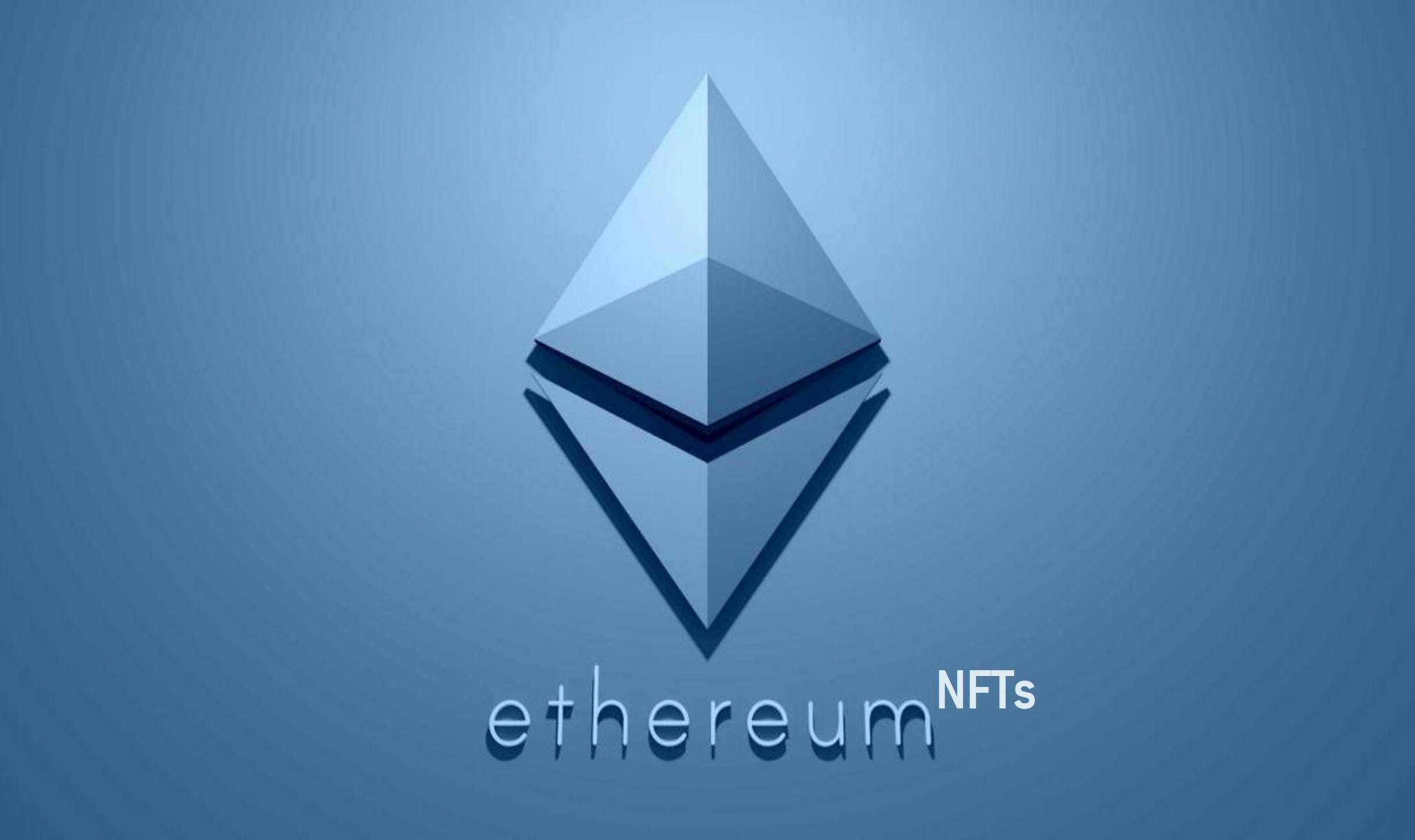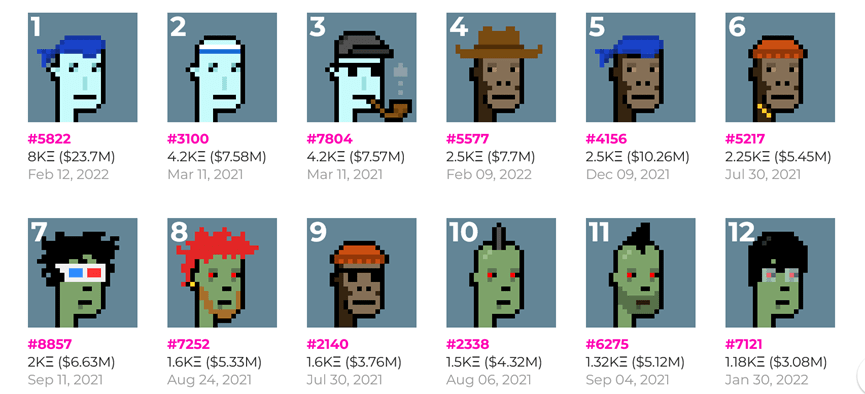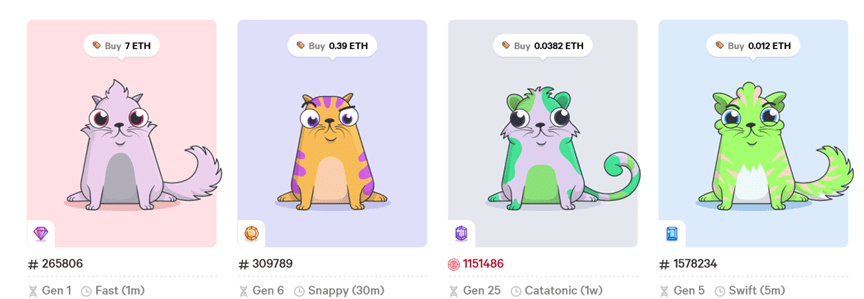
According to Business Insider, the Ethereum blockchain owns about 80% of the NFTs and though other blockchains are starting to offer some competition, Ethereum still holds firm.
The Ethereum blockchain has dominated the NFT space as a result of its first-mover’s advantage, the blockchain has set the pace as far as proof of stake is concerned while incorporating newer features.
Perhaps a notable feature of the Ethereum blockchain is its architecture and highly secure network, which has made it the most preferred blockchain for NFT creation.
Key Takeaways
• The Ethereum blockchain is the pioneer blockchain that set the ball rolling for the existence of NFTs.
• There are now a total of 80,300 NFTs on the Ethereum blockchain, far more than the total of any other blockchain.
• Competing NFT blockchains such as Solana and Polkadot have been able to work on some of the weaknesses exhibited by Ethereum, such as slow transaction speeds and high transaction fees.
• The Ethereum blockchain still retains its position as the number one NFT blockchain in the NFT space, and whether it will retain this position in the future remains to be seen.
SEE ALSO: How NFTs are Shaping the Internet of the Future
SEE ALSO: How To Create Cardano NFTs (Step by Step Guide)
SEE ALSO: How To Make NFTs for Yourself (6 Quick Steps)
This article takes a look at the Ethereum NFTs in detail, as well as the reasons for their popularity.
What are Ethereum NFTs?
Simply put, Ethereum NFTs are NFTs that were created using the Ethereum blockchain.
In the process of being created on the blockchain, these NFTs get to utilize the offerings of the blockchain, such as high security and wider market exposure.
These NFTs built on the Ethereum blockchain are generally referred to as ERC-721 tokens, which depict their uniqueness and also show that they cannot be duplicated as each NFT is assigned a unique piece of code on the blockchain.
Cryptokitties, a popular Ethereum blockchain game was the first to utilize the ERC-721 token in creating unique digital collectibles in the form of kitties.
Since then, members of the Ethereum community have gone ahead to create even more exciting applications using these ERC-721 tokens than what was utilized by CryptoKitties.
Types of Ethereum NFTs
Before we proceed to the types of Ethereum NFTs, you should understand that there are now a total of 80,300 NFT collections on the Ethereum blockchain, up from 15,540 last year.
In this article, however, I will share insight into the top three most popular NFTs on the Ethereum blockchain right now.
Bored Ape Yacht Club

The Bored Ape Yacht Club is one of the most popular and successful NFT projects created on the Ethereum blockchain.
This Ethereum NFT project is a collection of 10,000 Bored Ape NFTs—unique digital collectibles living on the Ethereum blockchain.
Each Bored Ape is unique and programmatically generated from over 170 possible traits, including expression, headwear, clothing, and more.
All apes are rare, but some are rarer than others. The apes are stored as ERC-721 tokens on the Ethereum blockchain and hosted on IPFS.
Currently, bored ape NFTs go for as much as $400,000 on average and have so far witnessed over $2.2 billion worth of trading volume to date.
CryptoPunks

The CryptoPunks inspired the modern crypto art movement as it was one of the earliest examples of a “Non-Fungible Token” on Ethereum.
It was the inspiration for the ERC-721 standard that powers most digital art and collectibles.
This NFT project consists of 10,000 uniquely generated characters with no two exactly alike. Also, each one of them can be officially owned by a single person on the Ethereum blockchain.
As of the time of writing, the cheapest CryptoPunk goes for as much as $215,000, with a 24-hr trading volume of $2-3 million USD.
CryptoKitties

CryptoKitties is another successful Ethereum NFT project built as a game rather than as art like the two listed above.
Within the game, players are tasked with breeding, collecting, and managing cat NFTs, with players also getting rewarded with in-game NFT items whenever a task is completed.
At the moment, players have bred over a million unique virtual kitties showing that the game won’t be slowing down anytime soon.
Why Ethereum NFTs are so popular
Trying to understand why Ethereum NFTs are so popular can be simply attributed to the fact that Ethereum was the first smart contract-enabled network.
What this means is that NFTs could easily be built on Ethereum with its smart contract ensuring the ownership and transferability of the NFTs.
Coupled with the fact that Ethereum also had high blockchain security, developers stormed the blockchain en masse to begin creating NFT projects.
For this reason, Ethereum classified these NFTs as ERC-721 tokens and any NFT which was created on the blockchain became instantly popular.
Due to the high influx, however, the blockchain became congested and the transaction speed took a nose dive, which in turn led to higher transaction fees.
While Ethereum saw this as a potential weakness and began to think of a solution, other blockchains saw this as an opportunity to compete favorably by addressing these issues.
Rivals to the Ethereum blockchain
Right now, numerous blockchains are competing for Ethereum’s NFT market dominance, but two blockchains that particularly stand out are the Solana and the Polkadot blockchain.
The Solana blockchain, for one, has a higher transaction speed of 60,000 transactions per second and a lower transaction fee as well, which has seen it create NFT projects of its own such as SolPunks and Thug Birdz.
The Polkadot blockchain, on the other hand, is capable of processing up to 1000 transactions per second compared to Ethereum’s 13 and also being capable of transferring data across blockchains, hence its para-chain feature.
The blockchain is also said to be flexible and capable of improving scalability, which is part of the reasons why it has garnered so much attention in such a short time.
Frequently Asked Questions (FAQs)
Why are Ethereum NFTs so popular?
Well, for one, they were built on the first-ever smart contract blockchain network. With little to no competition back then, these NFTs quickly rose to garner the interest of investors who wanted to know more.
Is the Solana blockchain the next Ethereum?
Given the achievements of the Solana blockchain so far, it could be argued in some quarters that Solana is indeed the next Ethereum.
The blockchain already has faster transaction speeds and fewer transaction fees and is also poised to overtake the Ethereum blockchain even more in terms of performance.
Final Thoughts
The Ethereum blockchain is the pioneer blockchain that led to the creation of NFTs.
Though today, we have been introduced to a lot of blockchains capable of performing even better than Ethereum, it does not take away the contributions of Ethereum towards these NFTs.
Also, the fact that the Ethereum blockchain may not be the fastest around has not stopped it from being used by more developers to create their own NFTs. The Ethereum blockchain owns most NFTs and might still do so for some time.
Read More




